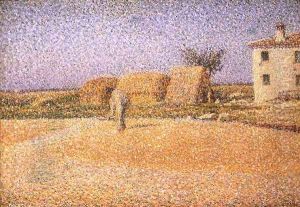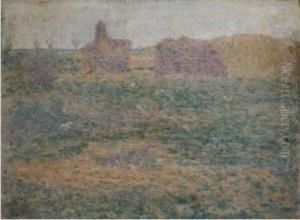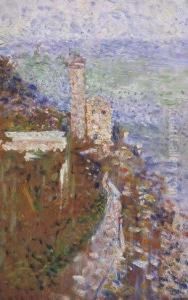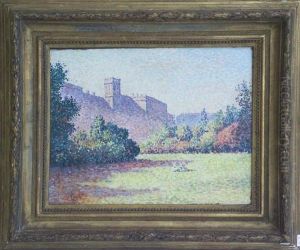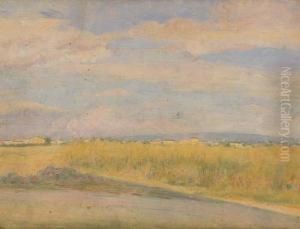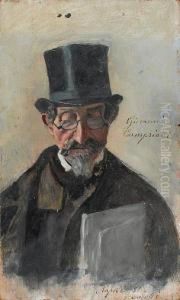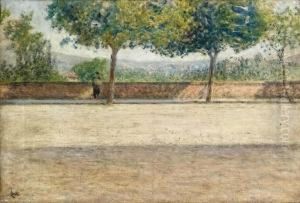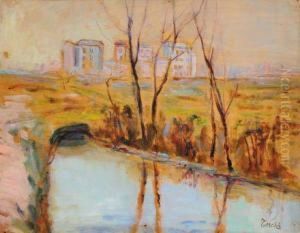Angelo Torchi Paintings
Angelo Torchi, born in 1879 in Ferrara, Italy, was a significant figure in the early 20th-century Italian art scene, whose contributions, though not as widely recognized in the broader spectrum of international art history, hold notable importance within the Italian context. His life and work were situated within a period of intense social, political, and artistic transformation in Italy, spanning the prelude to and aftermath of both World Wars. Torchi's artistry is often characterized by its reflection of and response to these tumultuous times, imbuing his work with a historical richness that captures the essence of his era.
Torchi's artistic journey was deeply influenced by the cultural milieu of Ferrara, a city known for its rich artistic heritage. He received his initial training and education in his hometown, grounding his artistic foundations in the traditions of Italian art, yet he was not immune to the influences of modern movements that swept through Europe in the late 19th and early 20th centuries. His work, therefore, straddles the realms of tradition and innovation, making him a unique figure in the Italian art world of his time.
Throughout his career, Angelo Torchi engaged with a variety of mediums, including painting, printmaking, and illustration, showcasing his versatility as an artist. His subjects varied widely, from landscapes and portraits to scenes of everyday life, each rendered with a sensitivity to the nuances of light, color, and form. Despite the diversity in his subject matter, Torchi’s works are unified by a distinct sense of empathy and a keen observation of the human condition, reflective of the broader existential queries and societal upheavals of his time.
The outbreak of World War I and the subsequent societal changes had a profound impact on Torchi's artistic direction. The war's aftermath and the rise of Fascism in Italy influenced not only the thematic concerns of his work but also its reception. During this period, Torchi, like many artists of his generation, navigated the challenges of maintaining artistic integrity while engaging with the political and cultural ideologies of Fascist Italy.
Angelo Torchi's death in 1945 came at a pivotal moment in history, marking the end of World War II and the onset of a new post-war era. His body of work remains a testament to an artist who was deeply entwined with the social and political fabric of his time, capturing the complexities and contradictions of early 20th-century Italy. While Torchi may not be a household name in the global art historical canon, his contributions to Italian art provide valuable insights into the cultural and historical context of his homeland during a period of significant upheaval and change.
